36 CFR Part 1194 - Proposed Information and Communication Technology (ICT) Standards and Guidelines NPRM
407.12 Reach Height.
At least one of each type of operable part of stationary ICT shall be at a height conforming to 407.12.2 or 407.12.3 according to its position established in 407.12.1 for a side reach or a forward reach.
407.12.1 Vertical Reference Plane.
Operable parts shall be positioned for a side reach or a forward reach determined with respect to a vertical reference plane. The vertical reference plane shall be located in conformance to 407.12.2 or 407.12.3.
407.12.1.1 Vertical Plane for Side Reach.
Where a side reach is provided, the vertical reference plane shall be 48 inches (1220 mm) long minimum.
407.12.1.2 Vertical Plane for Forward Reach.
Where a forward reach is provided, the vertical reference plane shall be 30 inches (760 mm) long minimum.
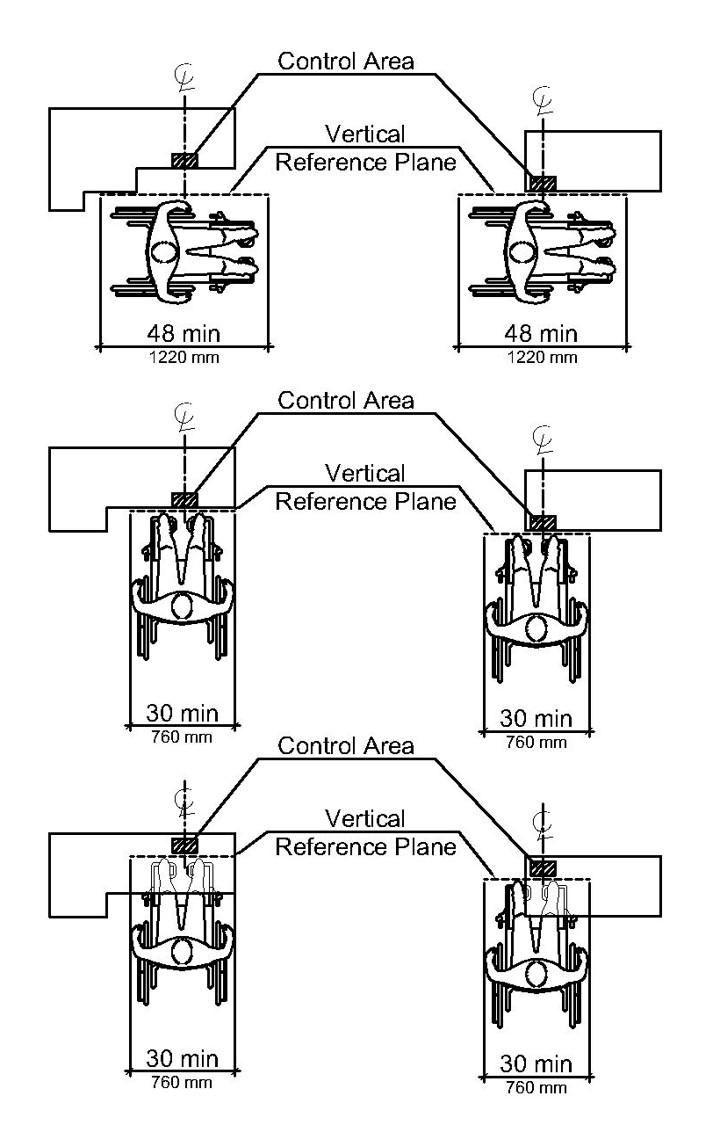
Figure 407.12.1
407.12.2 Side Reach.
Operable parts of ICT providing a side reach shall conform to 407.12.2.1 or 407.12.2.2. The vertical reference plane shall be centered on the operable part and placed at the leading edge of the maximum protrusion of the ICT within the length of the vertical reference plane. Where a side reach requires a reach over a portion of the ICT, the height of that portion of the ICT shall be 34 inches (865 mm) maximum.
407.12.2.1 Unobstructed Side Reach.
Where the operable part is located 10 inches (255 mm) or less beyond the vertical reference plane, the operable part shall be 48 inches (1220 mm) high maximum and 15 inches (380 mm) high minimum above the floor.
Figure 407.12.2.1
407.12.2.2 Obstructed Side Reach.
Where the operable part is located more than 10 inches (255 mm), but not more than 24 inches (610 mm), beyond the vertical reference plane, the height of the operable part shall be 46 inches (1170 mm) high maximum and 15 inches (380 mm) high minimum above the floor. The operable part shall not be located more than 24 inches (610 mm) beyond the vertical reference plane.
Figure 407.12.2.2
407.12.3 Forward Reach.
Operable parts of ICT providing a forward reach shall conform to 407.12.3.1 or 407.12.3.2. The vertical reference plane shall be centered, and intersect with, the operable part. Where a forward reach allows a reach over a portion of the ICT, the height of that portion of the ICT shall be 34 inches (865 mm) maximum.
407.12.3.1 Unobstructed Forward Reach.
Where the operable part is located at the leading edge of the maximum protrusion within the length of the vertical reference plane of the ICT, the operable part shall be 48 inches (1220 mm) high maximum and 15 inches (380 mm) high minimum above the floor.
Figure 407.12.3.1
407.12.3.2 Obstructed Forward Reach.
Where the operable part is located beyond the leading edge of the maximum protrusion within the length of the vertical reference plane, the operable part shall conform to 407.12.3.2. The maximum allowable forward reach to an operable part shall be 25 inches (635 mm).
Figure 407.12.3.2
407.12.3.2.1 Height.
The height of the operable part shall conform to Table 407.12.3.2.1.
Table 407.12.3.2.1 Operable Part Height
Figure 407.12.3.2.1
407.12.3.2.2 Knee and Toe Space.
Knee and toe space under ICT shall be 27 inches (685 mm) high minimum, 25 inches (635 mm) deep maximum, and 30 inches (760 mm) wide minimum and shall be clear of obstructions.
EXCEPTIONS:1. Toe space shall be permitted to provide a clear height of 9 inches (230 mm) minimum above the floor and a clear depth of 6 inches (150 mm) maximum from the vertical reference plane toward the leading edge of the ICT.
2. At a depth of 6 inches (150 mm) maximum from the vertical reference plane toward the leading edge of the ICT, space between 9 inches (230 mm) and 27 inches (685 mm) minimum above the floor shall be permitted to reduce at a rate of 1 inch (25 mm) in depth for every 6 inches (150 mm) in height.
Figure 407.12.3.2.2
Figure 407.12.3.2.2 Exception 1
Figure 407.12.3.2.2 Exception 2
Figure 407.12.3.2.2 with both Exceptions applied

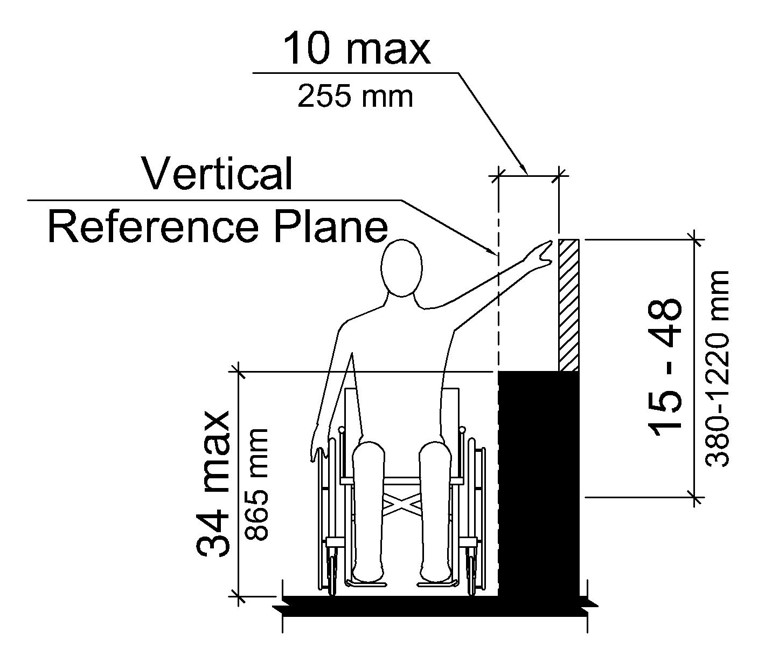
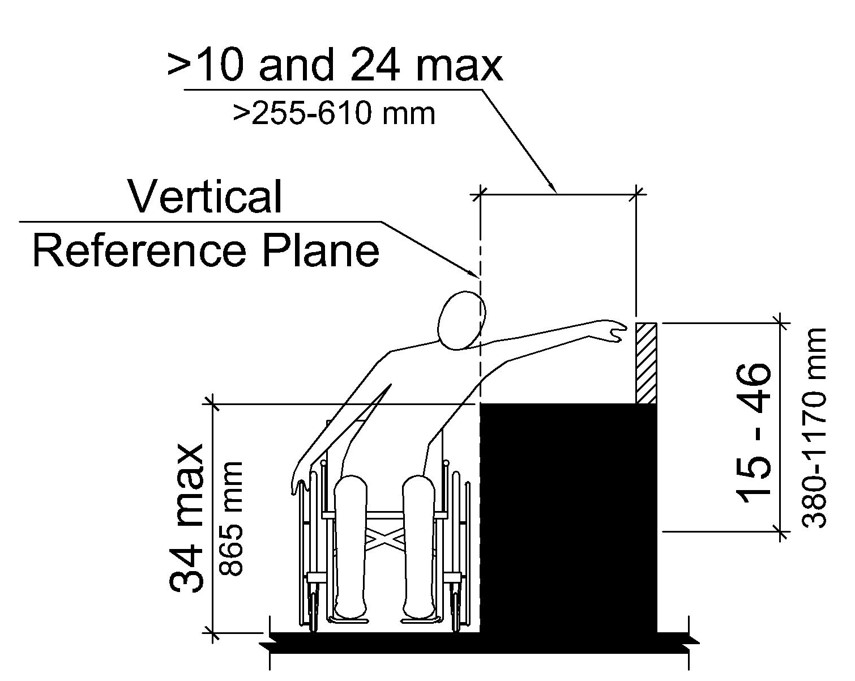
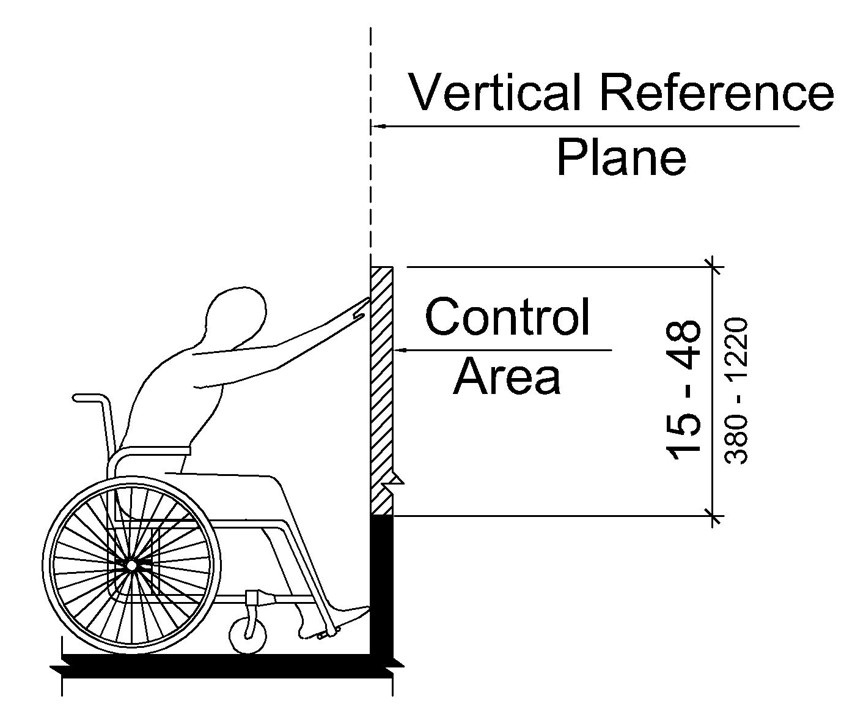
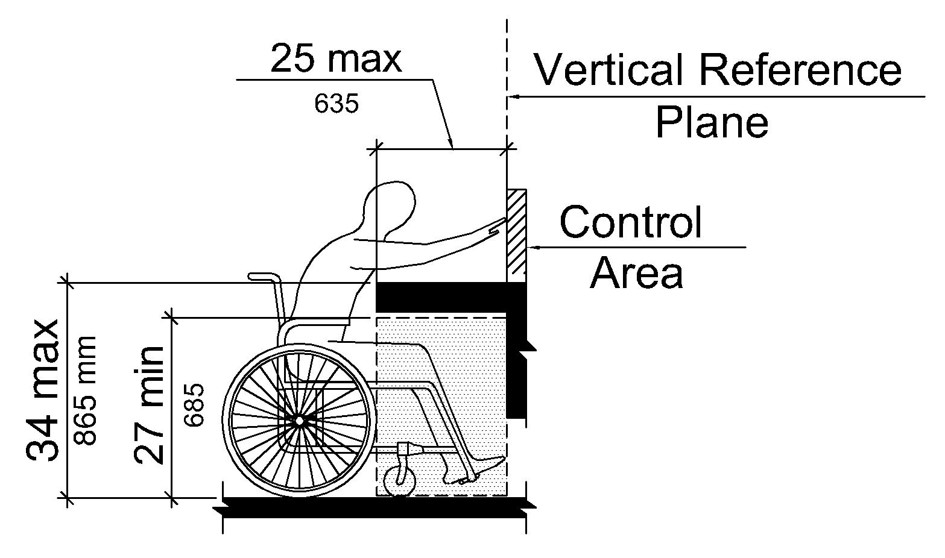

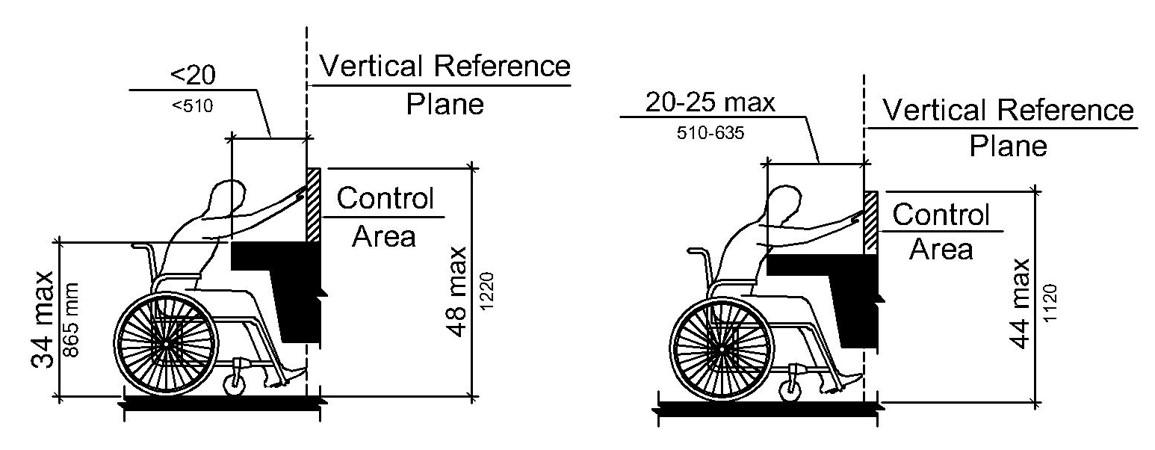
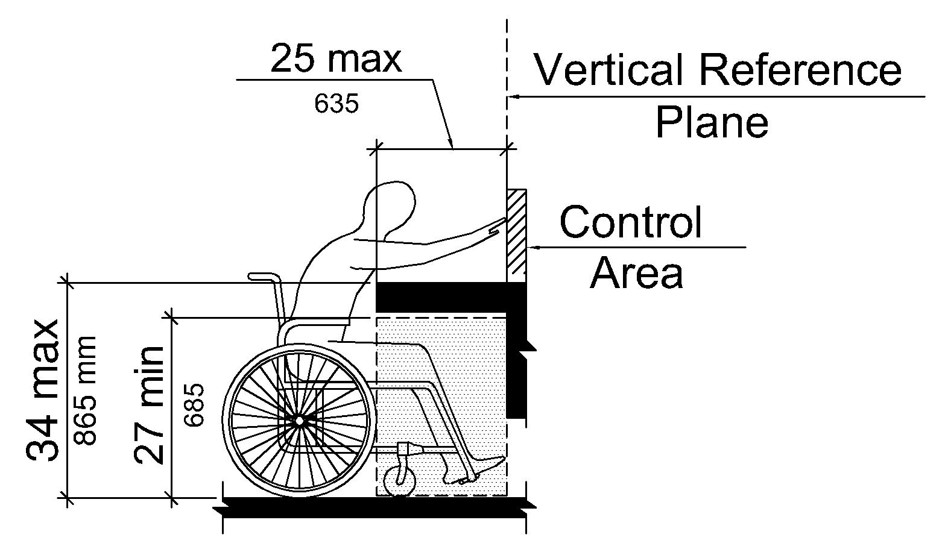
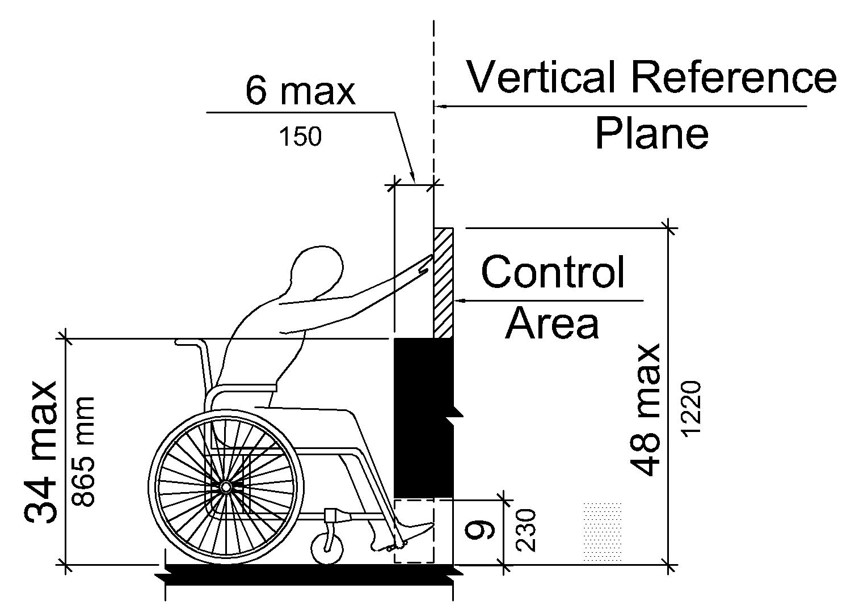
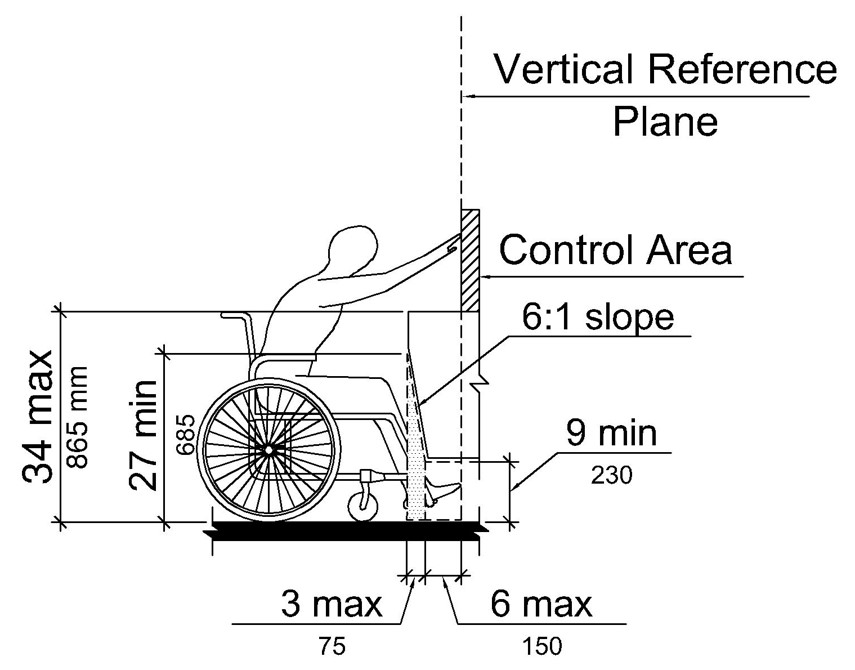
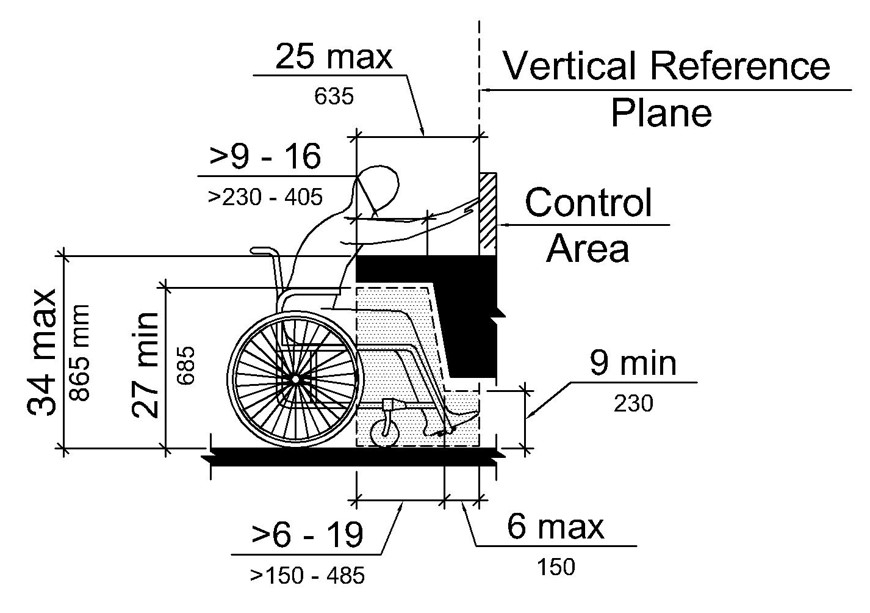
User Comments/Questions
Add Comment/Question